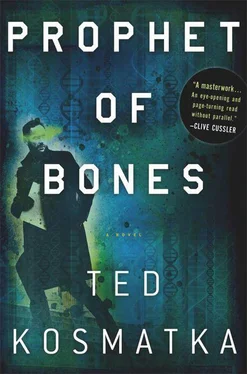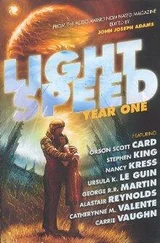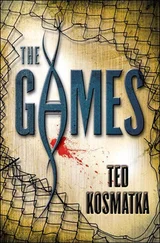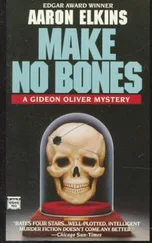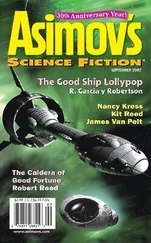Students at most Ivy-caliber schools could be divided into three categories. First (of course) were those who were rich. Second were those who might or might not be rich but had, more significantly, gotten scholarships. Third were those who were going to graduate with a debt approximating the national deficit.
This third category could be subdivided. Some of these debt-indentured students would, after graduation, go on to make an amount of money even more obscene than the world-crushing debt they’d labor under. They’d work their asses off. Money would rain from the sky and sluice into the overflowing gutters of their bank accounts. They would, in fact, pay off their obscene debt without too much trouble and later wonder what all the fuss was about. Anybody could do it, right? They’d succeed largely because they were computer savants or good-looking, charismatic lawyers with the attention surfeit of competitive Chinese rice farmers and eidetic recall of corporate tax law, or because they’d invent Google or something. In short, they’d be able to pay off their obscene debt because they came out of the box preoptimized for dollar acquisition. The rest of the students in that third category were screwed, though.
Lillivati was in the first category; Paul, the second.
They used her room for sex, because her parents could afford for her not to have a roommate.
She was a year older than him and graduated early.
And true to her first words to him: she left. Or had to leave.
I hate to break your heart.
First, home to India. Then graduate school in Seattle.
Paul threw himself into his schoolwork, taking independent study in the osteochronology of ancient anthropoid remains.
In the world of archaeology, the line between man and un-man could be fuzzy, but it was never unimportant. To some scientists, Homo erectus was a race of man long dead, a withered branch on the tree of humanity. To those more conservative, he wasn’t man at all; he was other, a hiccup of the creator, an independent creation made from the same toolbox. But that was an extreme viewpoint.
Mainstream science, of course, accepted the use of stone tools as the litmus test. Men made stone tools. Soulless beasts didn’t. Of course there were still arguments, even in the mainstream. The fossil KNM-ER 1470, found in Kenya, appeared so perfectly balanced between man and un-man that an additional category had to be invented: near man. The arguments could get quite heated, with both sides claiming anthropometric statistics to prove their case.
Like a benevolent teacher swooping in to stop a playground fight, the science of genetics arrived on the scene. Occupying the exact point of intersection between the slopes of Paul’s two passions in life—genetics and anthropology—the field of paleometagenomics was born.
And here he found his calling.
He received a bachelor’s degree in May and started a graduate program in September. A year later, there came a letter and an airline ticket, and a company called Westing flew him to the East Coast for a job interview.
They sat in a conference room. The company logo was a DNA double helix.
“I won’t finish my master’s for another six months,” he told them, confused by the offer.
“We’re more interested in ability than academic credentials,” the chief interviewer said. “The schools can’t keep up. Field techniques are obsolete by the time the textbooks are printed. If you want to see the curriculum three years early, sign our employment contract.”
“This is all moving so fast.”
The interviewer smiled. “Like the field itself.”
They shook hands over a glossy table.
Three weeks after that, he was in the field in Tanzania, sweating under an equatorial sun, collecting samples for later laboratory analysis. He drank quinine water by the gallon and dodged malaria.
They flew him back and forth between labs and dig sites.
All the while, he worked closely with his team, learning the proprietary techniques for extracting DNA from bones that were fifty-eight hundred years old.
Bones from the very dawn of the world.
The flight to Bali was seventeen hours, and another two to Flores by chartered plane—then four hours by jeep over the steep mountains and into the heart of the jungle. To Paul, it might have been another world. Rain fell, then stopped, then fell again, turning the road into a thing which had to be reasoned with.
“Is it always like this?” Paul asked.
“No,” Gavin said. “In the rainy season, it’s much worse.”
The jeep slalomed along the rutted track, throwing rooster tails of black mud as it negotiated the pitched landscape.
Paul gripped the jeep’s roll bar to steady himself and stared out into the thick growth that slid past on both sides of the road.
Flores, isle of flowers. From the air it had looked like a green ribbon of jungle thrust out of blue water, a single bead in the rosary of islands that stretched between Australia and Java. Sulawesi lay to the north, New Guinea to the northeast. The Wallace line—a line more real than any border scrawled across a map—lay miles to the west, toward Asia and the empire of placental mammals. But here a stranger emperor ruled.
Paul was exhausted by the time they pulled into Ruteng. He rubbed his eyes. Children ran alongside the jeep, their faces some compromise between Malay and Papuan: brown skin, strong white teeth like a dentist’s dream. The town crouched with one foot in the jungle, one on the mountain. A valley flung itself from the edge of the settlement, a drop of kilometers.
The jeep wound its way through the crowded streets, past shops, and houses, and thronging tent bazaars, past smaller clapboard structures whose function Paul could only guess at. Small vans and motorbikes shouldered each other for space at intersections, horns blaring. If there were driving laws, Paul couldn’t deduce them from the available data.
Rail-thin pariah dogs lurked in the gaps between buildings. Paul noted their colors with a geneticist’s eye, reading their genes as they picked through the garbage, tails curved upward over their bony hips. The yellow one was Ay; the black-and-tan, at/at. And others: E/m, bb, s/i. He saw no solid blacks. That color variety hadn’t been among the first dogs carried across the Wallace line in bamboo rafts. That kind didn’t exist here.
The jeep pulled to a stop in front of a small two-story structure.
The men checked into their hotel, handing over 170,000 rupiah apiece. Paul had no idea if that was expensive or not, but he found his room basic and clean. He slept like the dead.
The next morning he woke, showered, and shaved. Gavin met him in the lobby.
“It’s a bit rustic, I admit,” Gavin said. His hair was pulled back into a tight ponytail, keeping it clear of his face.
“No, it’s fine,” Paul said. “There was a bed and a shower. That’s all I needed.”
“We use Ruteng as a kind of base camp for the dig. Our future accommodations won’t be quite so luxurious.”
Back at the jeep, Paul checked his gear. It wasn’t until he climbed into the passenger seat that he noticed the gun, its black leather holster duct-taped to the driver’s door. It hadn’t been there the day before.
Gavin caught him staring. “These are crazy times we live in, mate.”
“And the times require researchers to carry guns?”
“This is a place history has forgotten. Recent events have made it remember.”
“Which recent events are those?”
“Religious events, to some folks’ view. Political to others’.” Gavin waved his hand. “More than just scientific egos are at stake with this find.”
They drove north, descending into the valley and sloughing off the last pretense of civilization. “You’re afraid somebody will kidnap the bones?” Paul asked.
Читать дальше
